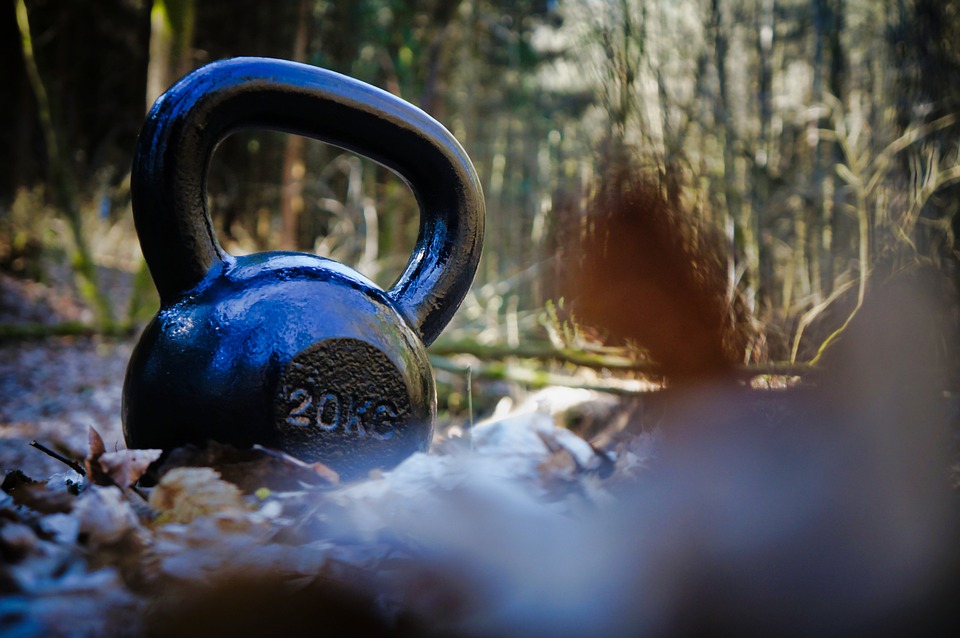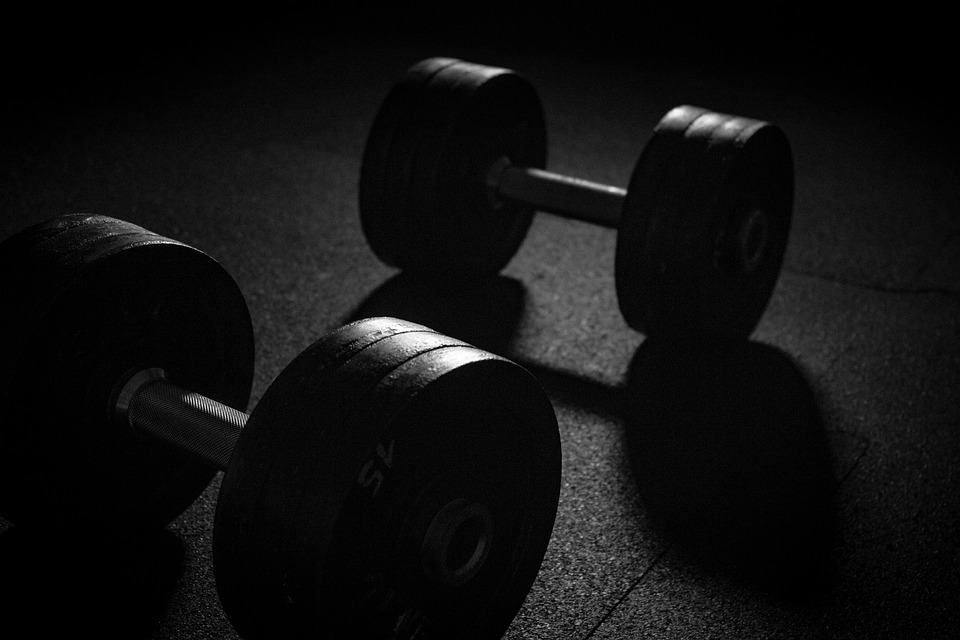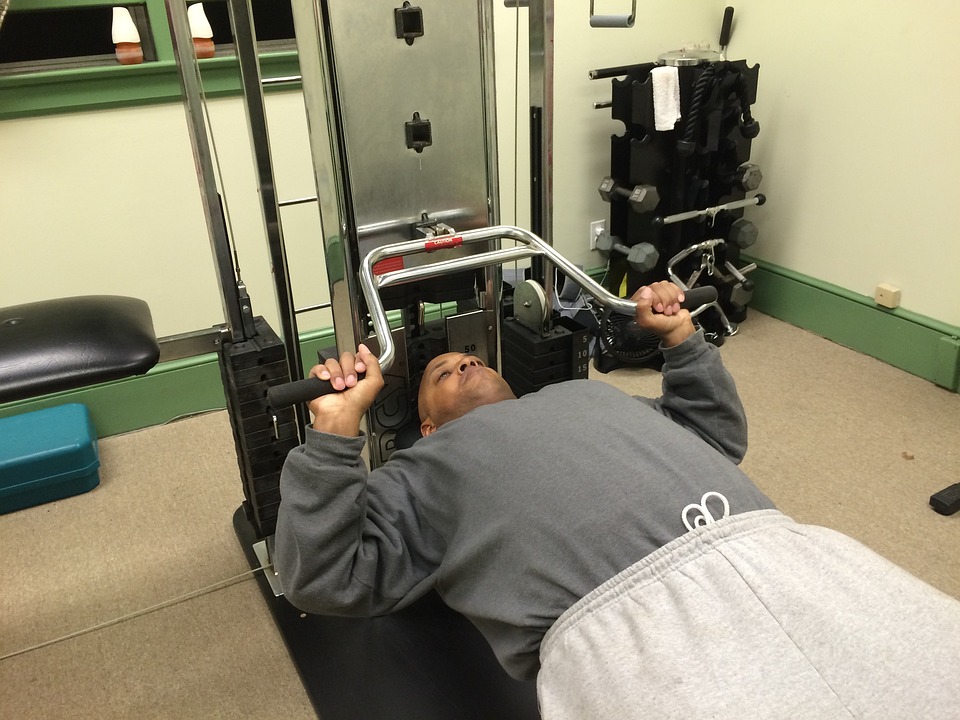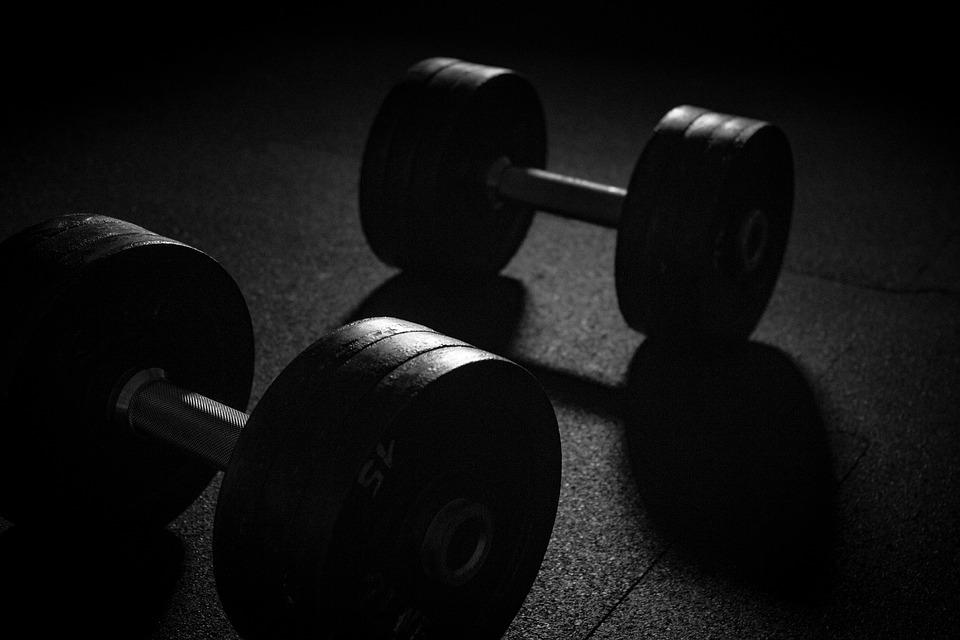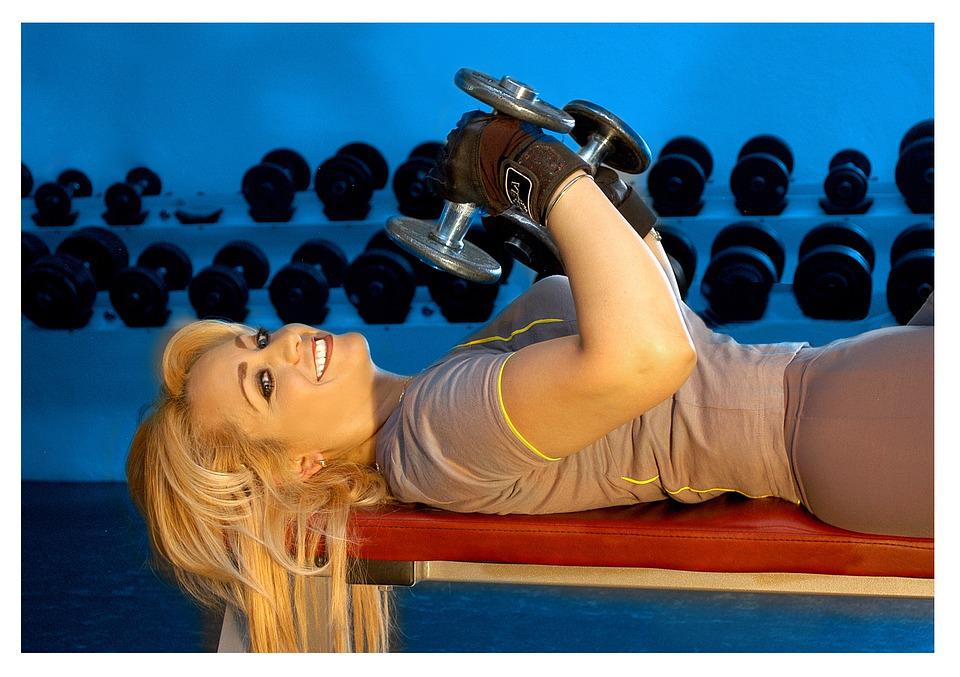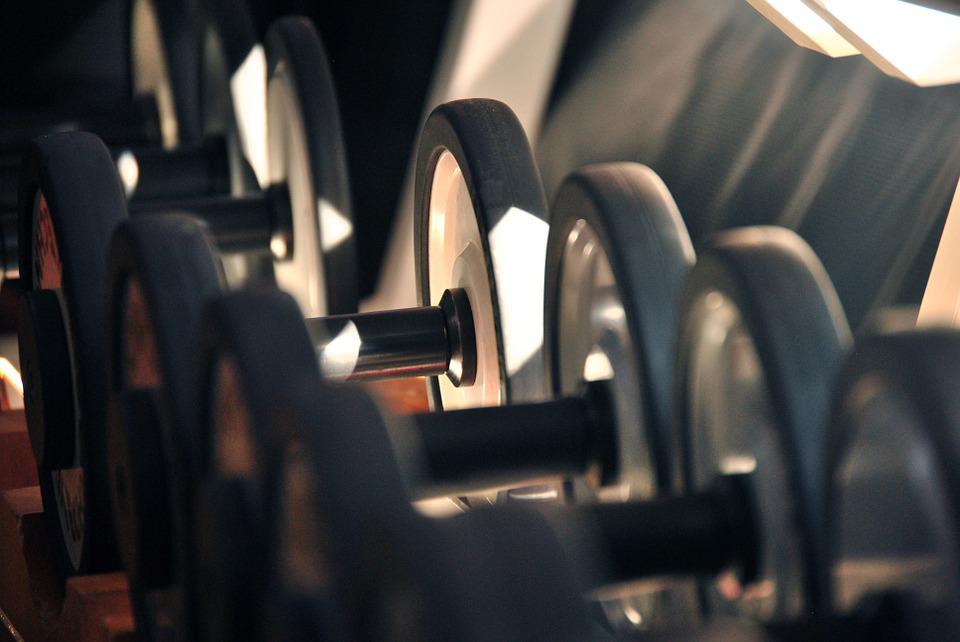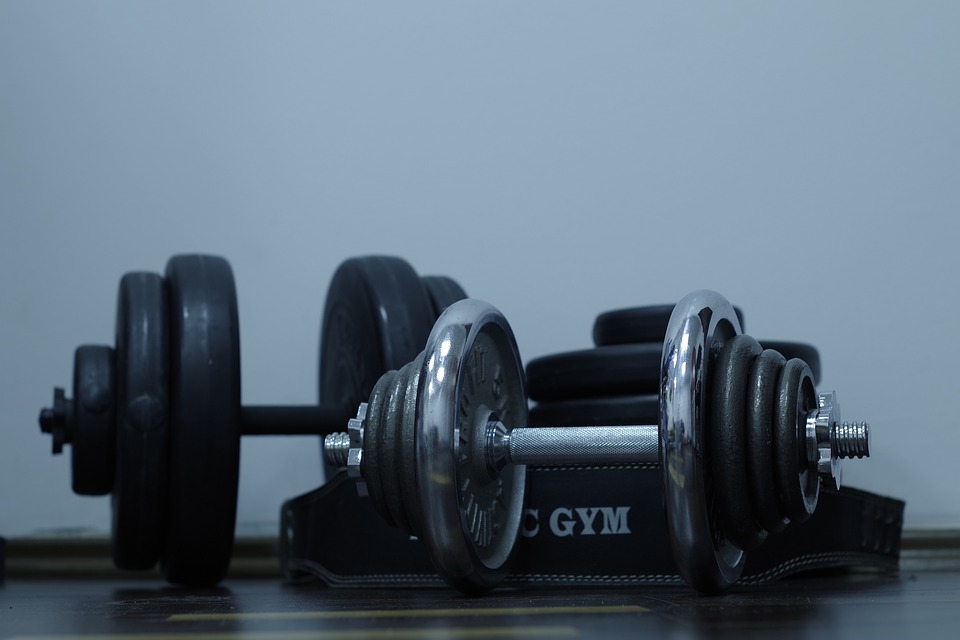
While there aren’t many things from 700 B.C. that are still popular, dumbbells are an exception. The first recorded use of dumbbells, specifically for leg training, was in ancient Greece. The records show that the athletes would swing stone implements while they were practicing their jumping drills. The extra weight would help add momentum to their leaps. The term “dumbbell” was originally coined in England in the 1700s, and then made its way to the United States. It appears that the Founding Fathers were the ones who started using them for exercise. In letters to his son, Benjamin Franklin wrote that he lives a temperate lifestyle, doesn’t drink wine, and works out with dumbbells every day. (He claimed to have performed a workout consisting of 40 swings.)
What Are the Benefits of Working Out My Legs with Dumbbells?
There are several advantages that dumbbells have over other tools, such as machines and barbells when it comes to leg training. Here are some key benefits.
Greater Freedom of Motion
This can be good or bad depending on your body type and your workout goal. The weight of a barbell is fixed in one position, which can have advantages or disadvantages depending on your physiology and what you’re trying to achieve with your workout. If you have injuries or a lack of flexibility, that can be a problem. Dumbbells enable you to modify where the load is in connection to your body, which can enable you to customize your activities to execute them more securely.
Take Romanian deadlifts, for example. The weight of the barbell is moved down the front of your body to your shins as you bend your hips back. The weight of the load is shifted forward, causing extra stress on your lower back. If you are using dumbbells, you have more control over where you are holding the weight. You can hold it further back, closer to your sides, or in a more central location. It places more stress on the hamstrings and less on the low back.
Correction of Strength Imbalances
It is difficult to identify imbalances in strength between the left and right sides when using barbells and machines. The stronger leg will make up for the weaker one, and you won’t notice which leg is not keeping up with the other. If this imbalance is not corrected over time, it can eventually lead to an injury.
Dumbbells are a good choice for single-arm training, where you work one limb at a time. Lunges, split squats, and single-leg RDLs can all be done more easily with dumbbells instead of other equipment. They also help you become more aware of your physical limitations, such as how far you can move or how much weight you can lift. You will be able to see which leg needs more work by training one at a time, and then you can begin to even things out. training that only uses one side of the body at a time lets you work with bigger ranges of motion, which is more like how we move in real life where we balance, land, and push off from one leg at a time instead of both legs together. If you want to be stronger, focus on working one side of your body at a time. This will help you be stronger when you use both sides together.
Increased Stability
Training with dumbbells in each hand (bilaterally) can be difficult to balance, so unilateral training helps improve stability. This can help you break through muscle and strength plateaus.
When your joints lack stability, your brain won’t allow you to produce the maximum amount of force that you’re capable of. The system essentially prevents you from experiencing any self-harm. Dumbbell training helps you to improve from all the other training you do.
Greater Safety
No matter what kind of exercise equipment you use, you have to be aware of your body and focus on proper form while you’re working out. But dumbbells are inherently safer than barbells. A) They offer greater freedom of motion. A) While lighter weights don’t let you train as intensely, they’re easy to let go of if you get in trouble. If you spend enough time at the gym, you will eventually see someone get stuck at the bottom of a barbell back squat and need help getting up. If you can’t finish a repetition with dumbbells, you can give up by just dropping the weights to the floor. If you’re working out at home by yourself, you need a pair of dumbbells.
Joint-Friendy Training
Whether it’s back squats, deadlifts, or their many variations, barbell leg exercises tend to put a lot of pressure on your spine. If your form is not perfect, you are much more likely to get injured. Many people do not have the ability to do these lifts safely due to stability and mobility limitations.
Dumbbell leg exercises don’t load the spine directly. Additionally, because they improve safety during workouts, you’ll feel more confident pushing yourself harder without worrying about your form breaking down. This can mean more intense workouts and faster gains.
The Best Dumbbell Workout for Growth
The most efficient way to emphasize muscle growth is to do 8-12 reps to near failure. If you want to produce more fatigue and wear on your joints, you should lift heavier weights for lower reps. Sets of reps in the 15-30 range can be torturous when done frequently. Dumbbells are equally as effective as barbells and machines when it comes to mechanical tension, training volume, training intensity, and metabolic stress – all of which are key drivers of muscle growth.
The Workout
You can do this workout twice a week. If you’re still feeling strong after completing the upper end of the rep range, increase the weight you’re using by 5 pounds. You can increase the amount of training you do by adding one set to your workout each week. The program should be followed for at least three months to see the best results.
- Dumbbell Goblet Squat: 2 x 12, 3 x 10-12 (0-1 RIR)
- Dumbbell Romanian Deadlift: 4 x 8-12 (1-2 RIR)
- Walking Lunge: 4 x 10-12 (1-2 RIR)
- Single-Leg Dumbbell Hip Thrust: 4 x 12-15 (0 RIR)
- Standing Single-Leg Calf Raise Raise: 4 x 10-20 on each side (0 RIR)
The Best Dumbbell Workout for Strength
If you want to get stronger, you should try to reach failure (or come close to it) when doing 3-6 repetitions. You will only see progress if you use heavy enough dumbbells and push each set with intensity.
In order to gain strength, you need to progressively overload your muscles by doing more reps, sets, or lifting more weight each week. As long as you’re increasing the weight or volume, you’ll gain strength.
The Workout
Perform this workout twice per week. If you can complete the goal reps of an exercise with more than the target RIR, then increase the weight for the next set. If you want to increase the volume of your workout, add one extra set each week. You should take a break from exercising every four to six weeks, or whenever you start to feel joint pain and fatigue. It is recommended that you stay on the program for a minimum of three months.
- Dumbbell Goblet Squat: 3 x 10, 3 x 3-6 (0-1 RIR)
- Dumbbell Romanian Deadlift: 4 x 5-6 (1-2 RIR)
- Bulgarian Split Squat: 4 x 5-6 per leg (1 RIR)
- Dumbbell Pistol Squat to a Bench: 3 x 5-6 per leg (2 RIR)
- Dumbbell Goblet Cossack Squat: 3 x 6-8 per side (1 RIR)
- Standing Single Leg Raise Raise: 4 x 10 (0 RIR)
The Best Dumbbell Workout for Fat Loss
First, you should know that fat loss is driven by nutrition. If you don’t stick to your diet, no amount of exercise will help you get the body you want. Even if you don’t completely overhaul your training routine, you can still promote fat loss. The goal of this workout is to help you maintain muscle while stripping away fat. This is done by increasing the volume of the workout but keeping the reps at 15 or less. And don’t lift featherweights, please. You’ll be lifting less weight than you could for eight to 10 reps, but you should still push yourself almost to the point of failure with each set.
The Workout
Your plan is to lift relatively heavy weights for more reps and to rest between sets for 30 to 45 seconds. You will also notice that there are no small, isolated movements in this workout. Using more than one muscle group during an exercise will help you burn more calories.
- Dumbell Goblet Squat: 4 x 10-15 (1-2 RIR)
- Walking Lunge: 4 x 12-20 (1-2 RIR)
- Dumbbell Romanian Deadlift: 4 x 10-15 (2+ RIR)
- Dumbbell Step-Up: 4 x 10-12 per leg (1+ RIR)
The Best Dumbbell Workout for Beginners
Beginners need to be consistent, have fun, and find a program they’ll turn into a habit. They benefit from easy-to-learn basics that keep them safe. This means that you don’t need to excessively train them as they will make progress with any type of training.
The Workout
If you are just starting this workout, you should do it once a week, and then gradually work up to doing it twice a week within a few weeks. Try to make your workouts more challenging each week by lifting heavier weights, doing more reps, resting less, and doing more sets. It is not advised to train to failure for beginners as they will see more form breakdown near failure and will not have developed a good sense of how close failure is.
- Dumbbell Goblet Squat: 4 x 10-12
- Dumbbell Romanian Deadlift: 3 x 10
- Dumbbell Split Squat: 3 x 6-8
- Dumbbell Step-Up: 3 x 10 per leg
- Standing Calf Raise: 4 x 8-12
The Best Workout if You Only Have One Dumbbell
If your gym is too crowded or your home gym isn’t good enough, you can try working out outdoors. No matter what method you choose, you only need one weight to get a good leg workout. Any exercises that you can do using two dumbbells can also be done using only one dumbbell. An effective way to hold a dumbbell is in the goblet position, as opposed to holding one in each hand. Doing movements on both sides of your body helps to keep you balanced.
The Workout
A single-leg dumbbell workout has a weight limit. Your load will be effectively cut in half. Although it may be difficult, you can still try to increase the number of repetitions, lifting tempo, or shorten the amount of time between sets. Feel free to perform this workout twice per week.
- Dumbbell Goblet Squat: 5 x 10-15 (1-2 RIR)
- Single-Leg Romanian Deadlift: 4 x 10-12 (1 RIR)
- Dumbbell Goblet Bulgarian Squat: 4 x 8-10 (1-2 RIR)
- Dumbbell Goblet Lateral Lunges: 4 x 10-12 (1-2 RIR)
- Standing Single-Leg Calf Raise: 4 x 10-20 (0 RIR)
How To Stretch Before A Dumbbell Leg Workout
Do these mobility drills that will help improve the flexibility in your hips and knees while also raising your body temperature. Doing these extra exercises will help you be able to do the positions in the workout.
1. Single-Leg Downward Dog to Spiderman Lunge with Quad Stretch
- Get into a pushup position with your hands directly under your shoulders and your body in a straight line from head to toe.
- Raise your right leg off the floor as you push your body backward and raise your hips into the air. Keep your left leg as straight as possible and your heel flat on the floor. Drive your arms into the floor so that your palms stay flat.
- Step your right leg forward and plant it next to your right arm. Take a moment to extend your spine and hips so that you realign yourself—your body should form a straight line from your head to the heel of your left foot.
- Lower the left knee to the floor and bend that leg as you reach back with your left hand to grasp the ankle. Gently pull your heel closer to your butt so you feel a stretch in your quads. Shift your weight forward to intensify the stretch.
- Let your foot go, and return to the pushup position. Repeat on the opposite side.
2. Squat to Stand with Walkout to Downward Dog + Single-Arm Reach
- Stand with feet shoulder-width apart and toes turned out about 30 degrees.
- Bend over and grasp your toes. Squat down as low as you can, extending your spine as you do so that you end up at the bottom of a squat with your elbows inside your knees and a long spine. You can wiggle your hips around a bit to help you get comfortable in the bottom position.
- Walk your hands forward until you’re in a pushup position, and push your hips back and into the air.
- Twist your torso to the right and grasp the outside of your right knee with your left hand. Twist in the other direction and grasp the opposite knee.
- Reverse the entire movement: Return to the pushup position, walk yourself back to the bottom of the squat, and then stand up with your hips while grasping your toes.
3. Thai Sit with Shinbox Switch
- Sit on the floor with both knees bent. Your left leg should be in front of you and your right leg pointing behind. Keep a tall spine, and try to get both your sit bones flat on the floor.
- Extend your hips to come up on your knees. Extend your arms straight in front of you, and slowly lower your butt back to the floor.
- Rotate your right leg outward and your left leg inward so that you turn your body and achieve the same sitting position in the opposite direction. Rise up to your knees, and lower back down. Use your hands for balance as needed, but don’t use them for momentum to help you rise up.

